Stability restored via combined surgical hip dislocation and periacetabular osteotomy
Cleveland Clinic is a non-profit academic medical center. Advertising on our site helps support our mission. We do not endorse non-Cleveland Clinic products or services. Policy
A 28-year-old woman was referred to Cleveland Clinic’s Center for Hip Preservation in the fall of 2018 with complaints of hip pain lasting several years. The patient described a continuous, aching pain localized to the left hip, left groin and left buttock. Activities of daily living exacerbated her pain, and she noted difficulty putting on shoes and socks. She also reported popping, catching and giving way.
On exam, the patient walked with a limp, favoring the left gait. The lateral aspect of the left hip was tender on palpation. The patient’s right leg was approximately 0.25 inches longer than the left. In provocative tests, we found left-sided anterior impingement and limited range of motion due to pain.
Consistent with the patient’s clinical history and examination, imaging revealed a Perthes deformity of the left hip with preserved joint space. The MRI revealed an acetabular labrum tear. Our patient’s chronic instability was related to underlying bony acetabular dysplasia.
The patient was placed in the lateral decubitus position for the left hip dislocation. We split the fascia, achieving safe access to the posterior aspect of the greater trochanter, and performed a trochanteric flip osteotomy with a saline-cooled thin-kerf saw and completed with broad osteotomes. We carried out a distal subvastus approach to the femur.
We exposed the hip capsule, then carried out a Z-shaped capsulotomy and tagged the anterior and posterior flaps. Distally, we extended the capsulotomy to the level of the neck. The hip was then able to be safely dislocated and intra-articular work was performed.
Using preoperative three-dimensional surgical planning and dynamic assessment, we confirmed bony prominences that required decompression on the femoral side. We reconstituted the gentle waist of the femoral head and neck junction using a combination of osteotomes and a burr.
Finally, we closed the trochanteric flip osteotomy and fixed it with screws. We advanced the fragment several centimeters to improve the relative head-neck lengthening and abductor arm. We closed the trochanteric bursa over the screws, and closed the subvastus approach to the femur.
Next, we placed the patient in the supine position. We made a standard Smith-Petersen approach. Starting slightly lateral to the crest and approximately 5 cm proximal to the anterior inferior iliac spine (AIIS), the incision was carried to the spine and then continued distally over the tensor-sartorius interval. We detached the sartorius from the spine and tagged it, and detached the insertion of the iliacus from the medial pelvic wall. Then, using periosteal elevators, we reached the sciatic notch laterally and the pelvic brim medially. We identified the rectus, and detached its insertion on the AIIS. We then exposed the hip joint capsule and the pubis by elevating the iliopsoas.
We then developed the interval between the psoas and hip joint capsule medially and, using large scissors, encountered the ischium. We cleaned the soft tissue using a periosteal elevator and exposed the medial aspect of the ischium. Following subperiosteal dissection, we placed Kinder Eva retractors around the superior and inferior aspect of the pubis bone to protect the obturator nerve.
After completing the necessary periacetabular osteotomies, we inspected the posterior column and found it intact. The acetabular fragment was freely mobile. Once satisfactory global acetabular coverage was confirmed through intraoperative radiograph, we fixed the osteotomy with cortical screws and obtained excellent fixation. We removed small fragments of bone from the anterior aspect of the inferior fragment and packed at the osteotomy interstices, augmenting with a demineralized bone matrix-cancellous bone allograft mixture.
Final intraoperative radiographs of the pelvis demonstrated satisfactory appearance of the reduction, fragment positioning and fixation construct. We carried the hip through a range of motion, and there was no secondary impingement. Final neuromonitoring signals were stable.
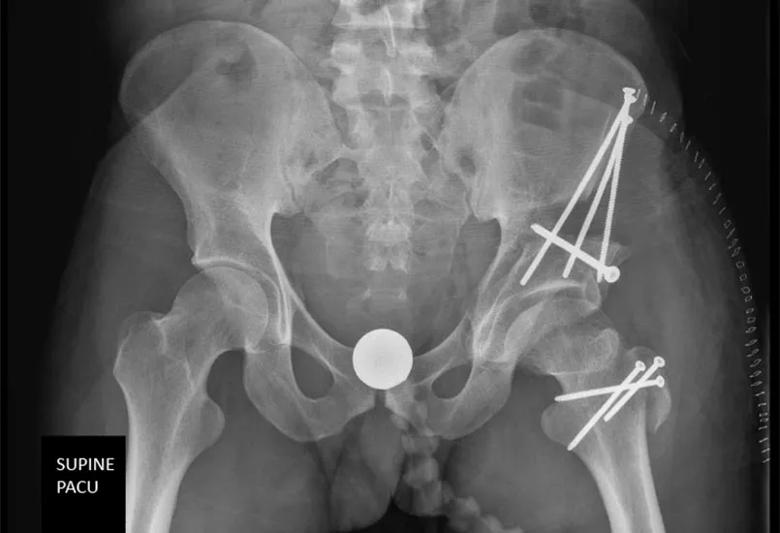
We reattached the sartorius and rectus femoris tendons using non-absorbable suture. We firmly reattached the crest muscles and fascia, approximated the distal fascia, and then closed.
At three months post-operatively, our patient was able to move her hip smoothly, with flexion to 100 degrees. The incision was well-healed. On X-ray, the osteotomy and hardware appear stable and the patient had a stable gait with no assistive device.
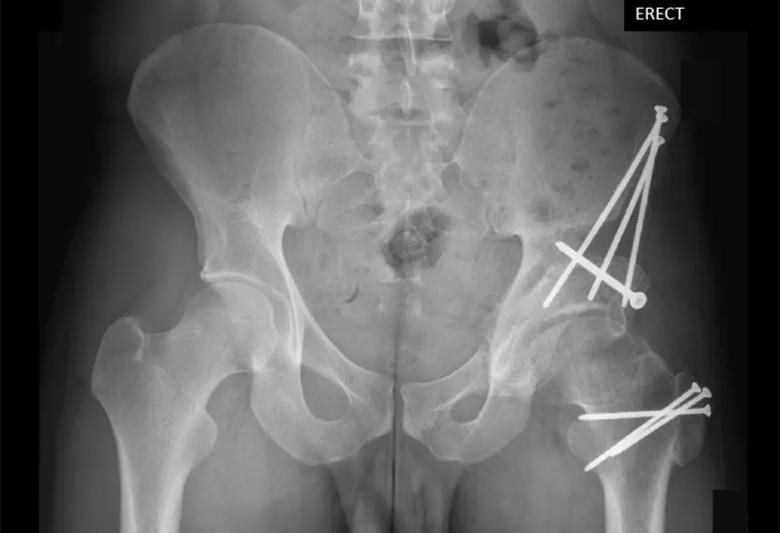
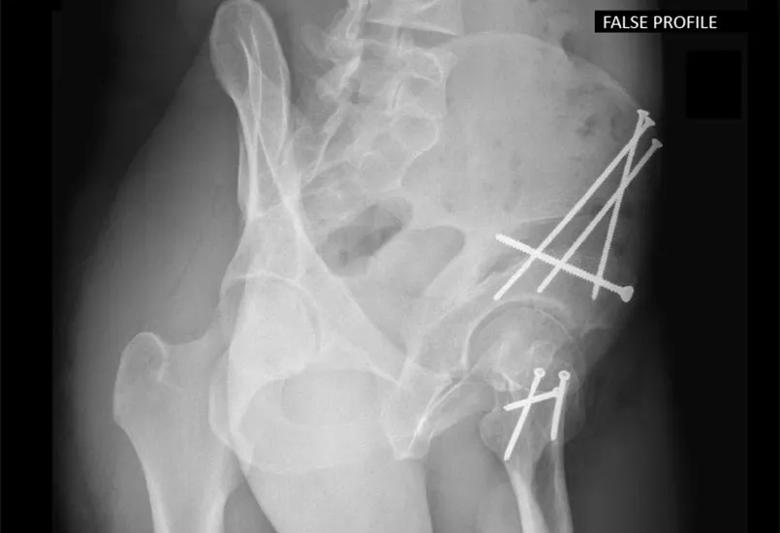
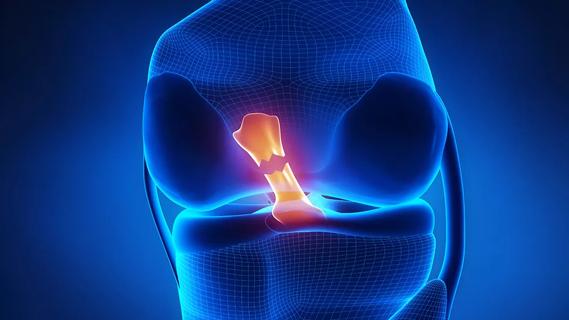
Study reports zero infections in nearly 300 patients
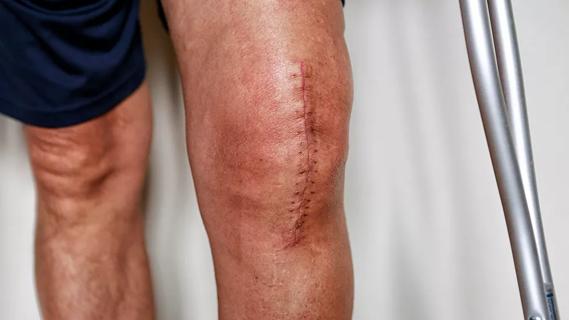
How to diagnose and treat crystalline arthropathy after knee replacement
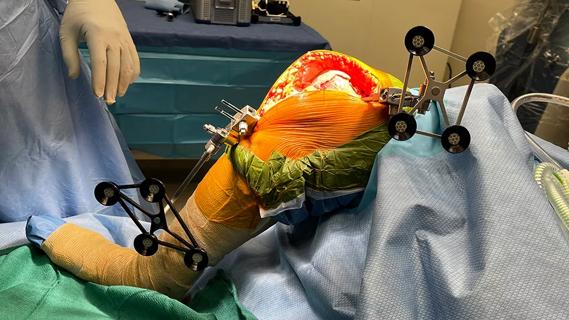
Study finds that fracture and infection are rare

Reduced narcotic use is the latest on the list of robotic surgery advantages

Cleveland Clinic orthopaedic surgeons share their best tips, most challenging cases and biggest misperceptions

How it actually compares to posterior and lateral approaches
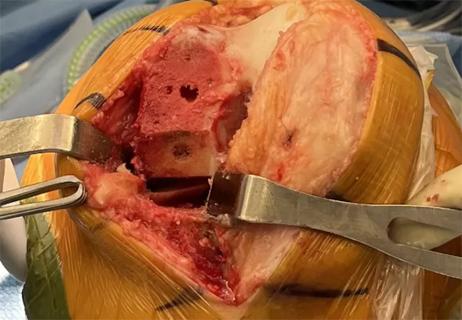
When procedure is performed by high-volume surgeons, outcomes are comparable to total knee replacement
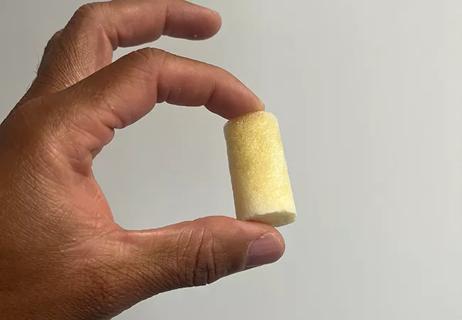
Clot substitute helps rejoin the stumps of a torn ligament